In the 1920s and 30s in the U.S., businesses went bankrupt, banks collapsed, factories closed their doors, and many people lost their jobs, their homes, and their life savings. With more than a quarter of people out of work, what effect do you think this had on the art and artists in America? Furthering this train of thought, what do you think is the responsibility of the government, in this situation, to support art and artists?

Without getting into a big big government or small government debate, because who needs that on an art history website, the story of how arts were supported in American in the Great Depression is one of my favorite bits of history.
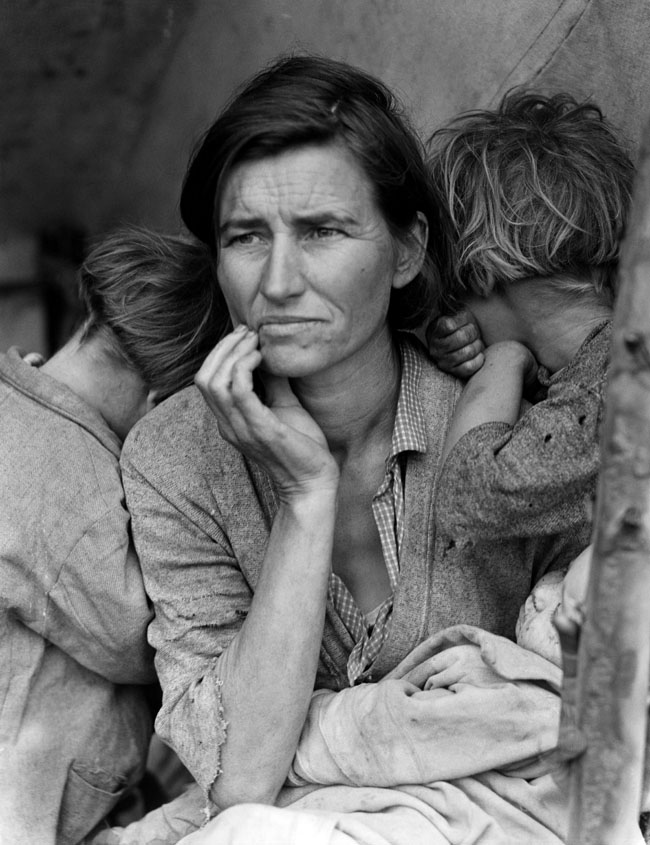
These questions above are some I have asked my students many times to prepare them to study the work of American photographers, regionalist painters, and architecture from the early 20th century.
I get a lot of great discussion with the first question—what might be the impact of art and artists? Students inherently go to a humble, honest, survival-mode place with their ideas. Documenting family. Sharing hardship. Connecting communities. It’s empowering to know our students have that ingrained in them.
Read on for more information and for some project/lesson ideas and discussion questions you can use with your students!

The New Deal
What the government did to support art, artists, workers, and communities during the time was really kind of exciting. Under Franklin D. Roosevelt’s New Deal, artists, painters, sculptors, photographers, architects, and more received government-funded programs to get them working again.
From the 1,300 murals created under a Treasury Department initiative to the photographs chronicling the dispossessed workers of rural America, the government found a way to help people get to work and beautify communities in the process.

San Antonio
I recently had the amazing opportunity to attend the first INSIGHT Blogger Retreat in San Antonio, TX sponsored by a group of amazing organizations and companies. This post is sponsored by INSIGHT Blogger Retreat and the sponsors listed at the end of this post. Thanks for the amazing experience!
One excursion we went on was a riverboat tour along the San Antonio River Walk graciously provided to us by The San Antonio Visitors Bureau. You can get tickets for the riverboat tour with your San Antonio Smart Destinations Go City Card.
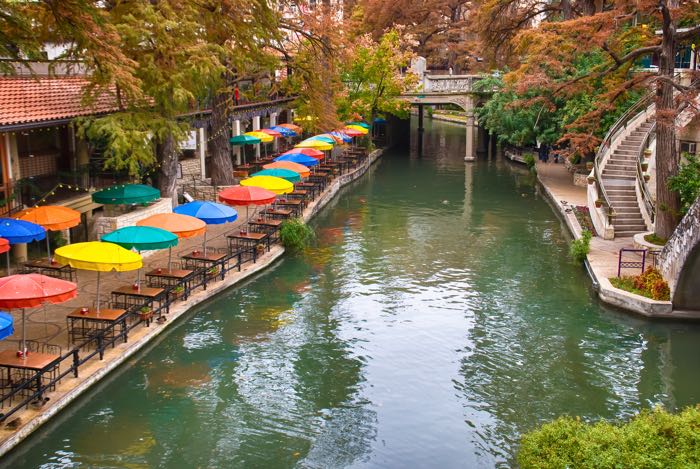
When I was 7, I visited San Antonio for the first time to stay with my big sister while my parents were on their honeymoon. We visited the River Walk, and I remember thinking it was really cool. I thought everything was cool back then–including this giant Bart Simpson T-Shirt.

This time, I listened intently while our delightful tour guide (who was pretty much a doppelganger of my dad despite the drinking from the Texas A&M cup. My dad would NEVER drink from a Texas A&M cup. We bleed burnt orange!) told us about the fascinating history of the origins of the River Walk and architecture of the area.

The WPA and the San Antonio River Walk
The Works Progress Administration (WPA) was one of the major programs of FDR’s New Deal, and one project funded by the WPA was the San Antonio River Walk. The River Walk is basically one long walkway alongside the San Antonio River. It runs under the streets of downtown and is lined with hotels, restaurants, stores, and bars. It’s gorgeous!

After a devastating flood in 1921 that killed 50 people, government officials, city planners, and the conservation society debated on how to handle the regular flooding of the San Antonio river. They built a dam to bypass a bend in the river and to save lives as well as the historic buildings of downtown.
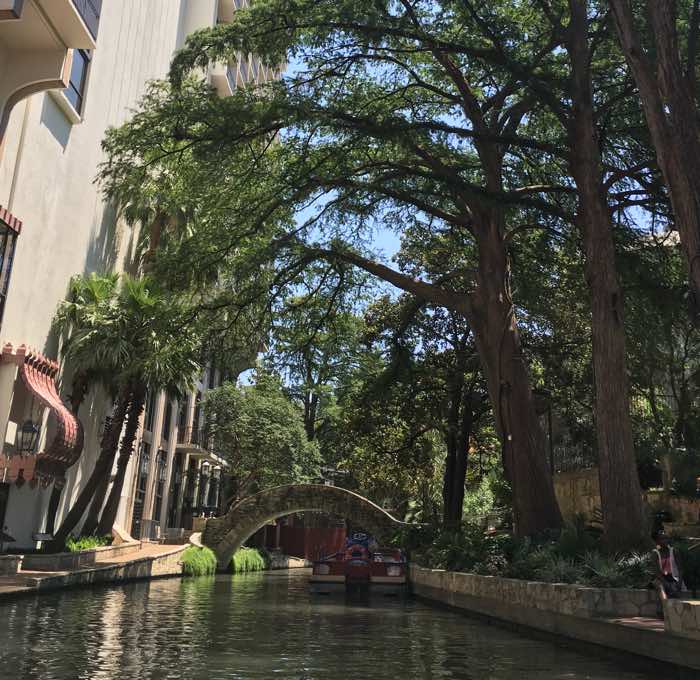
Architect Robert Hugman was the mastermind behind the River Walk. The bend in the river was originally slated to be paved over, but Hugman and the San Antonio Conservation Society (the “Conservation Ladies” as our tour guide lovingly called them) fought to rejuvenate and protect the area. They advocated fiercely for their plan and fundraised for 10 years before the WPA supplied funding in 1938 for 20 bridges, 17,000 feet of walkways, and landscaping.
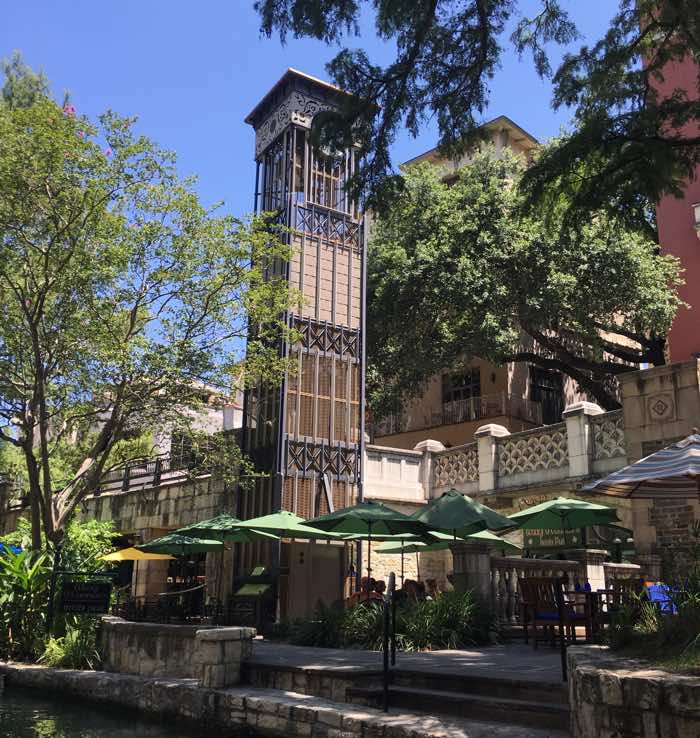
Along the river, all of the historic buildings remain intact whether still with their original function or as my dad-doppleganger said “we don’t tear down buildings in San Antonio; we turn them into hotels.”
Speaking of hotels, we were hosted by the Hotel Valencia Riverwalk, and it was so beautiful! My large room had balcony overlooking a gorgeous courtyard.

The varied architecture and stories made for such a lovely experience. I wish I could keep writing to tell you all about the architecture, but this is getting long enough already (and I don’t know it all yet, I need to read more!)!
Now, how to explore this content with your students. How do you think 7-year-old me would like the following activities?
WPA Art Lesson and Project Ideas
- Have students design a city beautification and community-building area for their own town.
- Assign students a WPA/New Deal-funded artwork, building, or place to research and write/present about. See links below for ideas.
- Have members of the local conservation society visit your class (or go on a field trip) to discuss their efforts.
- Have students photograph historic areas in their town.
WPA Art Discussion Questions
- With more than a quarter of people out of work in the Great Depression, what effect do you think this had on the art and artists in America? What do you think is the responsibility of the government, in this situation, to support art and artists?
- Why is it important so preserve historic buildings?
- How has your town been preserved?
Learn More
Want to learn more about the WPA/New Deal art and architecture and San Antonio Architecture? Check out these articles
- Are Artists “Workers”? Art and the New Deal by Elizabeth Broun, History Now: The Journal of the Gilder Lehman Institute
- A New Deal for the Arts, Online Exhibit from the National Archives
- New Deal Programs: Selected Library of Congress Resources
- New Deal Art, U.S. General Services Administration
Dig deeper into the history of the WPA and of San Antonio with these books. Please note, this post includes Amazon affiliate links. As an Amazon Associate I earn from qualifying purchases.
- American-Made: The Enduring Legacy of the WPA: When FDR Put the Nation to Work
- San Antonio’s Historic Architecture (Images of America) by T. Irwin Sessions
- Saving San Antonio: The Preservation of a Heritage by Lewis F. Fisher



Visit San Antonio
I highly recommend a trip to San Antonio. My trip was sponsored by these awesome organizations! Thanks so much for the awesome experience in your city!

The San Antonio Visitors Bureau
The San Antonio Convention & Visitors Bureau is happy to welcome you to historic and cultural San Antonio. We hope you enjoy our diverse offerings from theme parks and museums to restaurants and cultural districts. There’s much to explore!
Smart Destinations Go City Card San Antonio
If you visit San Antonio, I recommend you use the Smart Destinations Go City Card. The riverboat cruise was included, but also it includes admission to the art museums! I visited the McNay Art Museum, and it was AMAZING. The Coney Island exhibit is absolutely not to be missed.
Settle into luxury at Hotel Valencia Riverwalk. Boasting 213 chic guest rooms, our stylish luxury San Antonio boutique hotel is irresistible to discerning travelers. Immerse yourself in a San Antonio downtown River Walk hotel that melds the elements of a sophisticated old world palazzo with eye-catching details of modern conceptual design.
San Antonio Restaurants
We ate so good at the retreat! The following restaurants provided our meals.
- Nao Latin Gastro Bar: One of the most unique parts about the Nao Latin Gastro Bar experience is that it acts as a classroom for students at The Culinary Institute of America – San Antonio. Prior to graduating, students spend their final months working front and back-of-house during lunch service to get hands-on experience. The food was so good, and I especially LOVED the art! Check out the pictures I posted on Facebook of the art.
- Fogo de Chão: Such an awesome cultural experience with INCREDIBLE food. This was a full Brazilian churrasco dining experience with a delicious market table and gauchos who cooked the meat bringing it right to the table. So so delicious.
- Bakery Lorraine: They provided us breakfast as well as afternoon pastries. So so yummy! The lemon macarons were to die for. I love anything lemon.
- Citrus Restaurant at Hotel Valencia: We had a delicious breakfast with awesome service at the hotel. The tea service was so cool. Here’s a video from one of the other bloggers of the tea service. So fun.

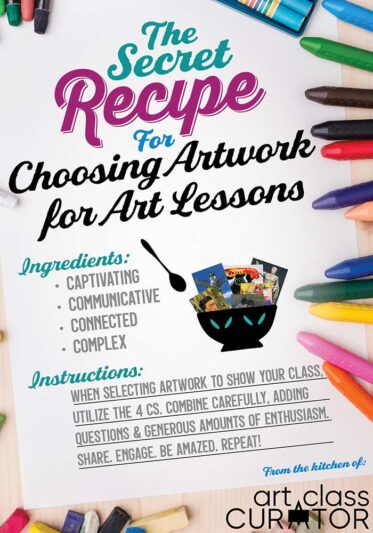
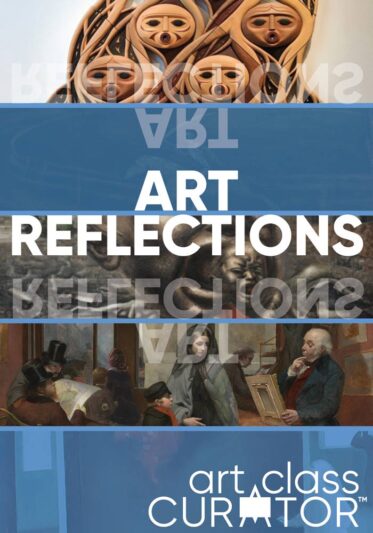
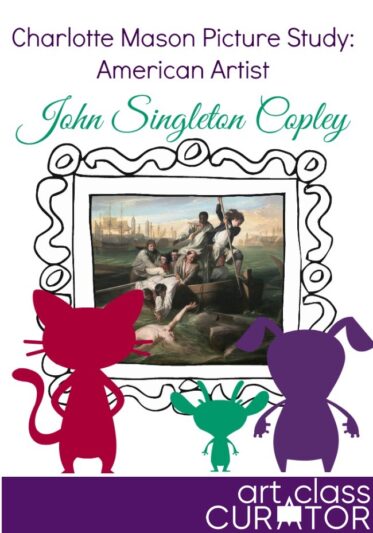

Leave a Comment